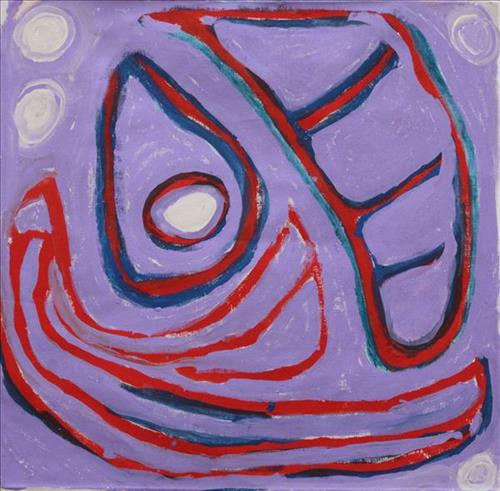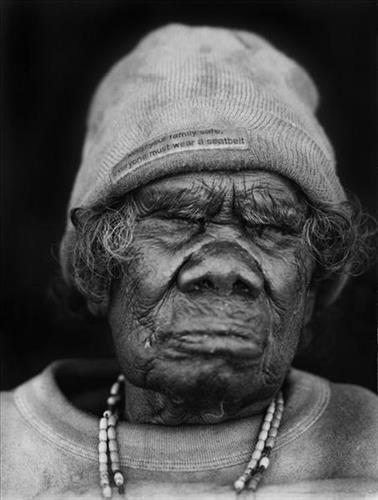11151030765
Nyipil and Kinyu
“The man who was chasing the Seven Sisters saw them dancing at Nyipily (Nyipil, Nibil, Canning Stock Route Well 34).”
From Kunawarritji we used to travel north to Nyipily. From here they took the cattle northeast and slaughtered a cow for us as we travelled. We cooked that cow all night at Nyipily. We carried the cooked meat with us as we kept travelling. We went east from Nyipil to Kinyu, eating the cooked meat as we walked, travelling quickly. We carried the meat on our heads, in a piti [wooden dish or coolamon]. We travelled on foot; they didn’t give us a ride on the camels.”
– Nyangapa Nora Nungabar (dec.)
Nyipily is a soak located north east of Kunawarritji Aboriginal community. This site lies within Nungabar’s ngurra (home Country, camp), the area which she knew intimately and travelled extensively with her family in her youth.
As referenced here by Nungabar, Nyipily features in the Minyipuru (Jakulyukulyu, Seven Sisters) Jukurrpa (Dreaming). Here, the women were dancing when they heard the sound of jarntu (dingoes) howling and a women’s song, ‘Wulkartungara’. Minyipuru is a key creation narrative for Martu, Ngaanyatjarra, Pitjantjatjara and Yankunytjatjara people that is associated with the seasonal Pleiades star constellation. Beginning in Roebourne on the west coast of Western Australia, the story morphs in its movement eastward across the land, following a group of women as they walk, dance, and even fly from waterhole to waterhole. As they travel the women camp, sing, wash, dance and gather food, leaving markers in the landscape and creating landforms that remain to this day, such as groupings of rocks and trees, grinding stones and seeds. During the entirety of their journey the women are pursued by a lustful old man, Yurla, although interactions with other animals, groups of men, and spirit beings are also chronicled in the narrative.
Nungabar also recalls stopping at Nyipily as a young woman with her close friend Nora Wompi (dec.) as they left their desert lives. Together they followed drovers north to Balgo Mission, where Nungabar remained for many years and there raised a family. The intersection of the Canning Stock Route with Nyipily also made this a site of early contact with Europeans for many Martu then living a pujiman life in the desert. Following the route’s construction, Martu encountered Europeans and other Martu working as cattle drovers as they would travel up and down the Stock Route from water source to water source. Increasingly, pujimanpa (desert dwellers) like Wompi followed the route to newly established ration depots, mission and pastoral stations. They were drawn to the route in search of food, by a sense of curiosity, or by loneliness. By the late 1950s and early 1960s, most of the desert family groups had left the desert. Eventually, these factors combined with an extreme and prolonged drought in the 1960s to prompt the few remaining pujimanpa to move in from the desert.




